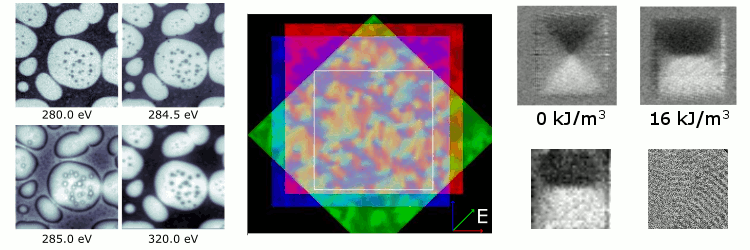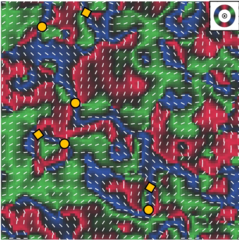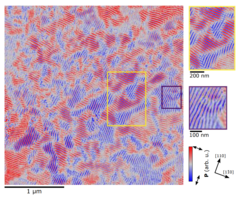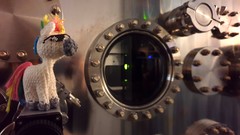
Welcome to the Microspectroscopy Group
The Microspectroscopy Group has a long experience in synchrotron based hyperspectral imaging for a wide variety of materials and involving many different scientific disciplines. In particular we study the nanostructures of novel organic materials and the magnetic properties of thin films and multilayers employing a combination of X-ray microscopy and spectroscopy. We operate two beamlines at the SLS, PolLux and ISS. At these beamlines we perform our research and provide support for external users.
Recent Scientific Highlights and News:
Spatially reconfigurable topological textures in freestanding antiferromagnetic nanomembranes
Researchers from the University of Oxford have imaged, through the use of the soft X-ray microscopy capabilities at the Swiss Light Source, spatially reconfigurable antiferromagnetic states in topologically rich free-standing nanomembranes
Ptychographic Nanoscale Imaging of the Magnetoelectric Coupling in Freestanding Bismuth Ferrite Films
Through soft X-ray ptychographic imaging, researchers at the Swiss Light Source have directly imaged the magneto-electric coupling between the ferroelectric domain structure and the spin-cycloidal state in freestanding BiFeO3 thin films.
First Light at MaxIV for SOPHIE
On January 23rd, 2024, first "Swedish" X-ray light was delivered to the SOPHIE endstation, currently installed at the SoftiMAX beamline of the MaxIV light source.


